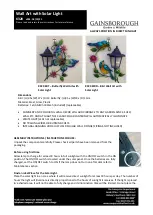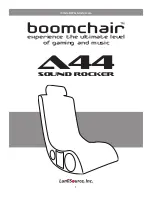
WAV151 Wind Vane
Counter-balanced optoelectronic sensor
Low inertia and starting threshold
Shaft heating for cold environment
DESCRIPTION
The WAV151 is a counter-balanced, low-threshold optoelectronic
wind vane. Infrared LEDs and phototransistors are mounted on six
orbits on each side of a 6-bit GRAY-coded disc. Turned by the vane,
the disc creates changes in the code received by the phototransistors.
The code is changed in steps of 5.6°, one bit at a time to eliminate
any ambiguities in the coding. Refer to the output code table on the
reverse.
A heating element in the shaft tunnel keeps bearings above the freez-
ing level in cold climates. Nominally it provides 10 W of heating
power (14 W in conjunction with the WAA251 Heated Anemom-
eter). It is recommended to use a thermostat switch in the sensor
cross arm for switching the heating power on below +4 °C.
The WAV151 complies with the following performance and envi-
ronmental test standards:
Wind tunnel tests per ASTM standard method D 5366-93 (for
starting threshold, damping ratio, overshoot ratio and delay dis-
tance; refer to technical data)
Exploratory vibration test per MIL-STD-167-1
Humidity test per MIL-STD-810E, Method 507.3
Salt fog test per MIL-STD-810E, Method 509.3
INSTALLATION
The WAV151 is mounted at the northern end of the WAC151 Cross
Arm. The installation is safer with the tail removed. Fit the 10-pin
cable plug through the mounting flange at the end of the cross arm,
then connect it to the sensor. Mount the sensor to the flange by
twisting, and tighten the screws.
Usually the WAV151 is used in conjunction with the WAA151 Ane-
mometer. Figure 3 shows the standard wiring in the WAC151 Cross
Arm's junction box, when the WAV151 and WAA151 are used. The
thermostat switch in the upper left corner is standardly included for
temperature control of shaft heating power.
Figure 3. WAC151 Standard Wiring for WAV151 and
WAA151
Figure 1. Mounting of wind sensor
A D+; 9.5 ... 15.5 VDC
B GND
C G5
D G4
E G3
F G2
G G1
H G0
J HTNG
K HTNG
Quick Reference Guide
}
20 VDC/AC
Figure 2. WAV151 connector




















